Best webcams 2024: Picks and expert buying advice

The best webcam makes you look your best — for less. Most laptops ship with a 720p webcam, so a 1080p webcam or even a 4K webcam can make you stand out by comparison.
I haven’t tested every one of these webcams, just most of them — and I describe how I test under my recommendations. You can also refer to my separate story on the best Windows Hello webcams for recommendations that aid videoconferencing and log you into your PC. Two recommendations from that list — a premium and budget option — appear on this list.
Take note of the FAQ at the bottom of this article, as there’s a new upcoming Windows feature that may create some big ripples on the webcam industry!
Why you should trust me: PCWorld has been testing PC hardware since the 1980s, and I’ve been a technology journalist for 30 years, with extensive experience in reviewing PC hardware. When it comes to webcams, my recommendations are based on hands-on testing in real-world scenarios. I also tap the expertise and published reviews of my counterparts in Sweden and Germany to offer a comprehensive view of the current webcam landscape.
Updated July 4, 2024: My most recent review is of the eMeet Smartcam C960 2K, a 1440p webcam that offers decent value at a $50 price tag. It’s good enough that I’ve named it as a runner-up in the best budget webcam category.
Anker PowerConf C200 – Best overall webcam
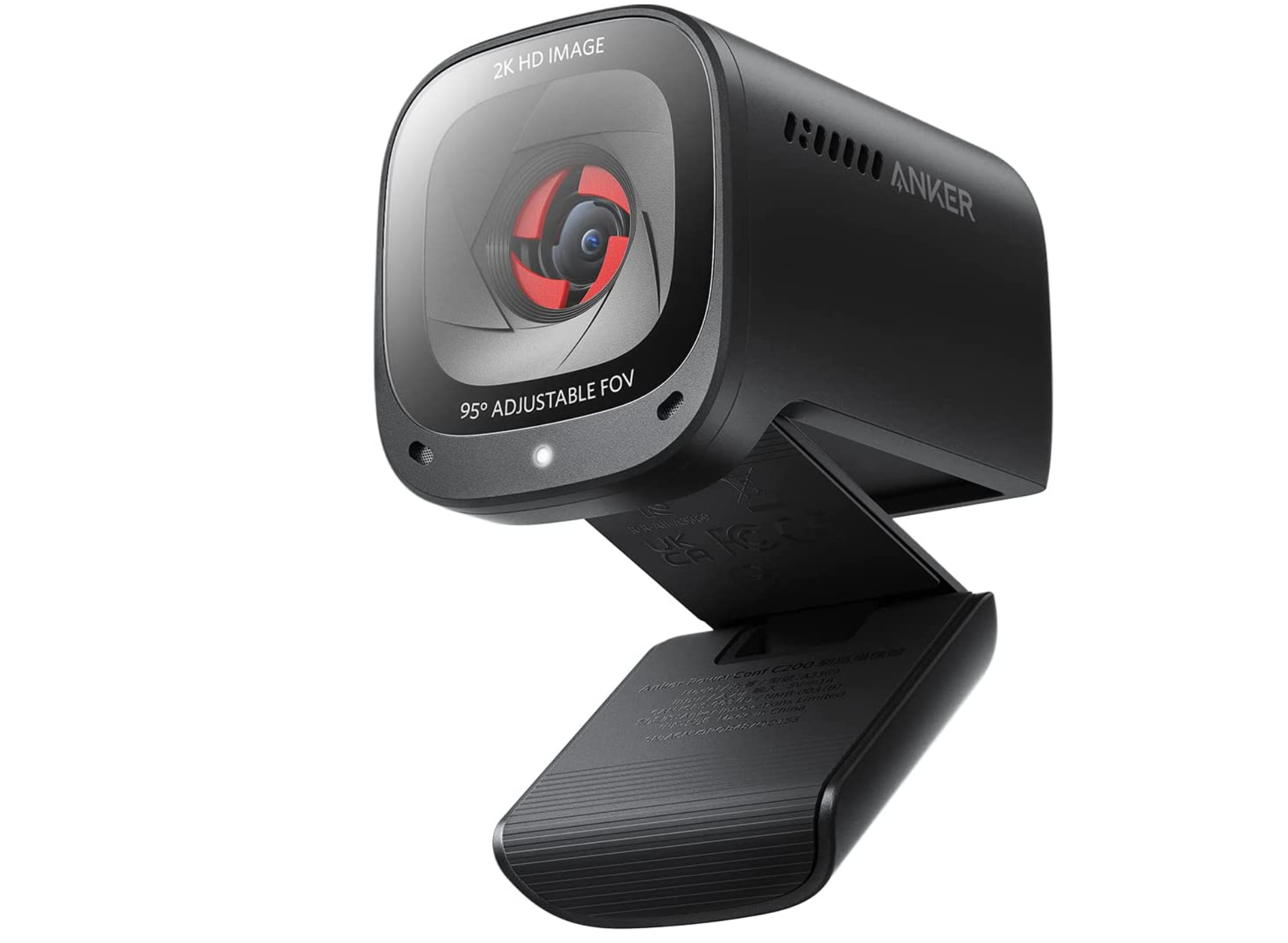
Pros
2K (1440p) resolution with autofocus Adjustable field of view Solid low-light performance 18-month warranty
Cons
Lacks 60fps support Anker software is necessary for full control Color balance is middling Price When Reviewed:$59.99Best Prices Today:$59.99 at Amazon$59.99 at Anker$59.99 at Walmart
Why I like the Anker PowerConf C200
The Anker PowerConf C200 offers an affordable yet substantial upgrade from the 720p cameras found in most laptop webcams to a 1440p webcam, yet does so at an affordable price. The webcam also works well in low light, a pitfall of many webcams. For all that, at just $60? That’s a solid value in my book, and makes this webcam our top recommendation.
(Anker and Amazon characterize this as a “Mac” camera. It’s plug-and-play within Windows, however.)
Additional features include an adjustable field of zoom that crops down to 65 degrees, meaning you can orient the camera on your face alone. The camera autofocuses, too. Naturally, there are noise-canceling mics and a privacy shutter that actually turns off the entire device. You will need Anker’s free Windows software, though, to enable some of these features. (That’s available on the Anker website.) We weren’t sold on the need for original software at first, but many other webcams now offer similar apps to enable full functionality.
Who should buy the Anker PowerConf C200
What sold us on this webcam are the basics: It’s just a good webcam for an affordable price. As such, it will appeal to a broad segment of buyers: work-from-home employees, small businesses, and general consumers. If you’re tired of your laptop’s 720p webcam and want even more, start here with the Anker PowerConf C200.
NexiGo HelloCam – Best overall webcam runner-up / Best for Windows Hello
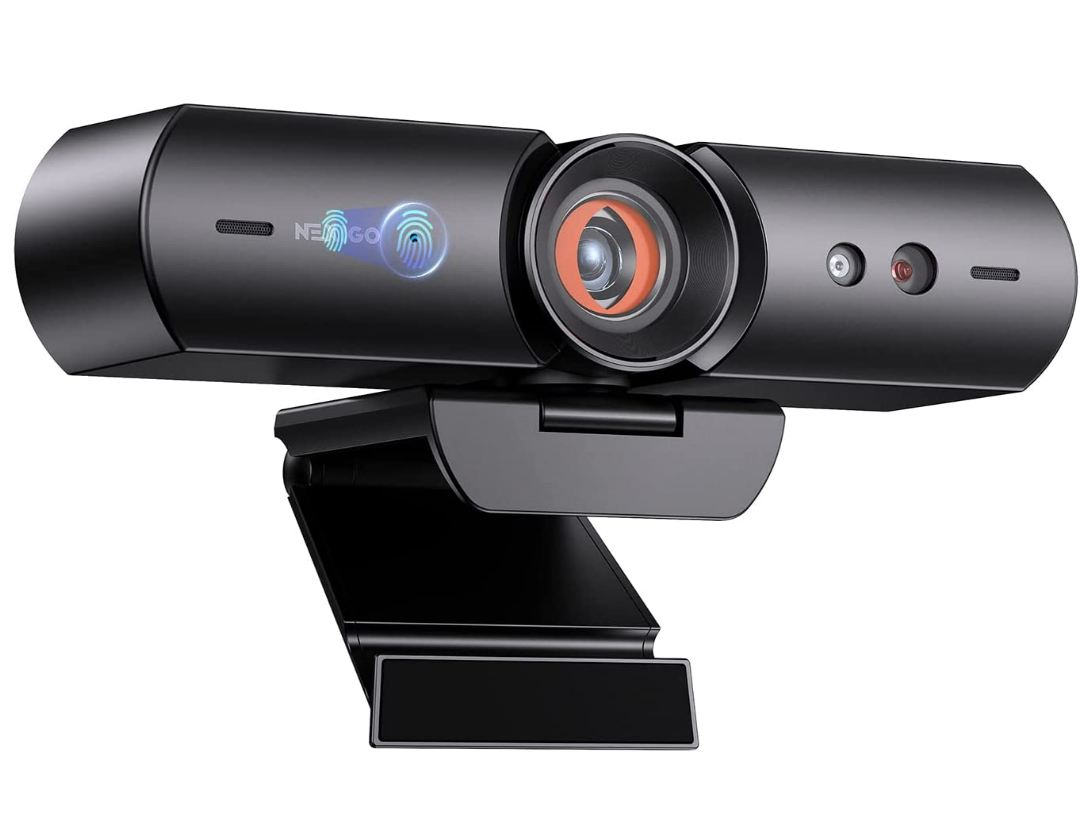
Pros
Windows Hello included 1080p Solid value
Cons
Cord is short and sometimes loose Free utility software needs to be loaded Price When Reviewed:$69.99Best Prices Today:$69.99 at Amazon$69.99 at NexiGo
Why I like the NexiGo HelloCam
My preferred webcams offer at least 1080p resolution at a ballpark price of between $50 to $70. This webcam goes a step further by offering Windows Hello. This biometric login technology is found on most modern laptops, but not on older ones. If your laptop lacks this technology, the HelloCam is an excellent way to add it — and for very little out of your wallet.
Once you set up the HelloCam, you’ll just need to present your face to the camera, and poof! You’re logged in. With biometric identification becoming more and more important to PC security, this is a worthwhile investment.
Otherwise, this is a good 1080p/30fps fixed-focus webcam, whose other signature feature is an iris-like physical webcam shutter. Once the webcam is in use, the iris opens; if turned off or disconnected, the shutter closes. The images this webcam produces are good, and the noise-cancelling mics are too.
Who should buy the NexiGo HelloCam
Budget buyers and mainstream users looking to improve upon their laptop’s 720p webcam, and who also want the added security of Windows Hello biometric security. Until recently, Windows Hello capability would probably have put this webcam over $100. (If you want Windows Hello with even more advanced features, see our pick below for best premium Windows Hello camera.)
Creative Live! Cam Sync 4K – Best budget webcam
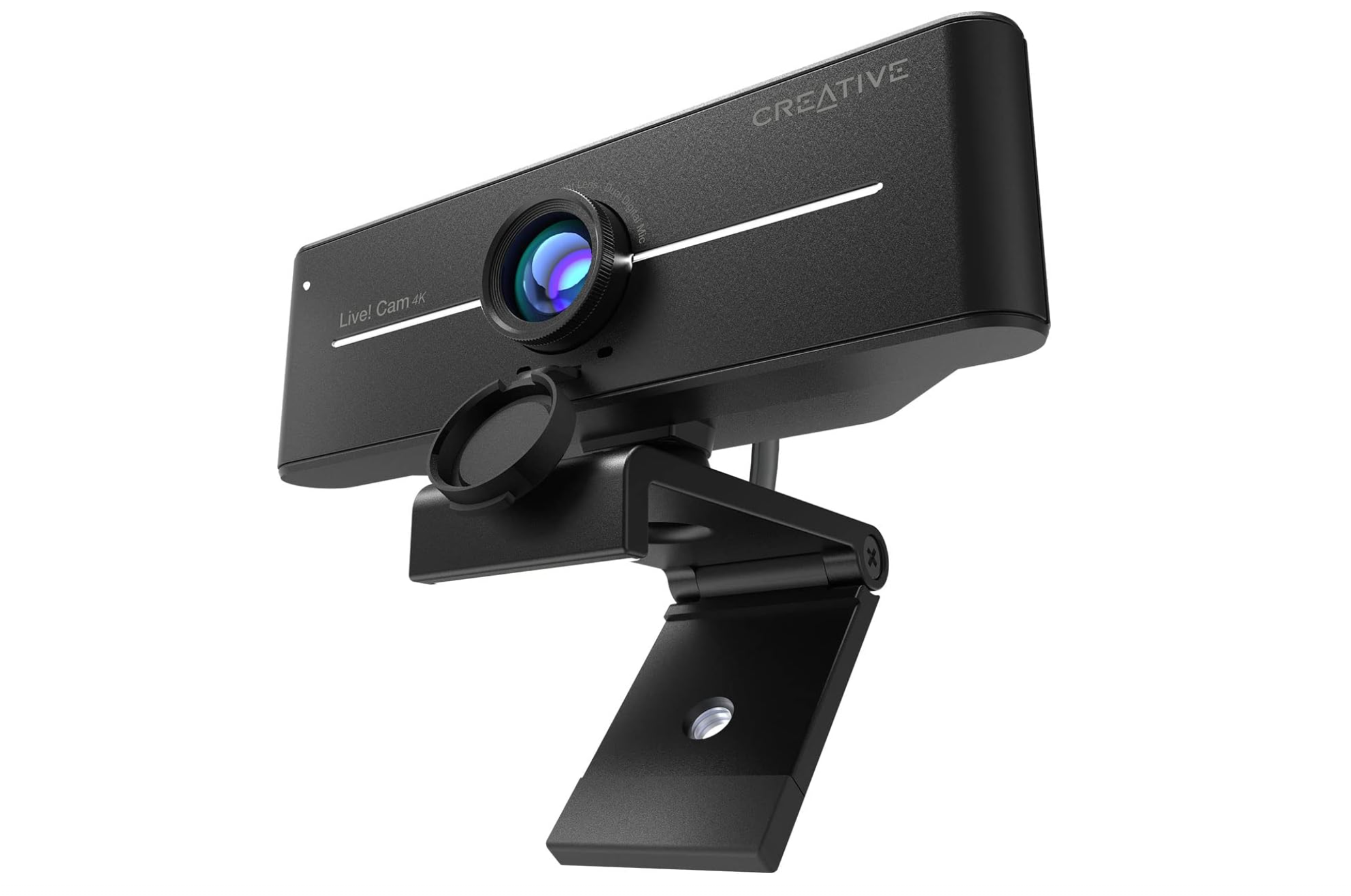
Pros
4K resolution for cheap! Backlight adjustment isn’t bad
Cons
Poor color balance Adjustable focus is of iffy value Cheats a bit in frame rate Price When Reviewed:59.99Best Prices Today:$45.04 at Amazon$49.99 at B&H$49.99 at Creative
Why I like the Creative Live! Cam Sync 4K
The question you should always ask of budget hardware is, what corners did they cut? Here, the answer is: not many. This is a 4K webcam at a cheaper price than many 1080p webcams, and that alone makes it noteworthy. Okay, it has manually adjustable focus, but that’s not a problem if you don’t move around a lot. Similarly, backlight adjustment is typically handled automatically, but this webcam’s manual adjustment is not a problem you work in a single location you can dial it in and forget it. There’s a flip-over privacy shutter, and a button to mute the mic.
You’re going to find that it cheats in the frame rate a bit, and I wasn’t wild with how well it captured my image, from a color perspective. But for about $50, for a 4K camera? It’s worth investigating.
Who should buy the Creative Live! Cam Sync 4K
If 4K matters, and you don’t feel like spending a lot, this is the camera for you. To me, this feels like a good choice for a student, or someone who wants to look good in front of their friends and maybe while taking remote classes, but just doesn’t want to spend a ton of money.
It’s also best for someone who will be streaming from an environment without a lot of (changing) natural light, but is still well-lit by a lamp or screen.
Read our full Creative Live! Cam Sync 4k review
eMeet SmartCam C960 2K – Best budget webcam runner-up
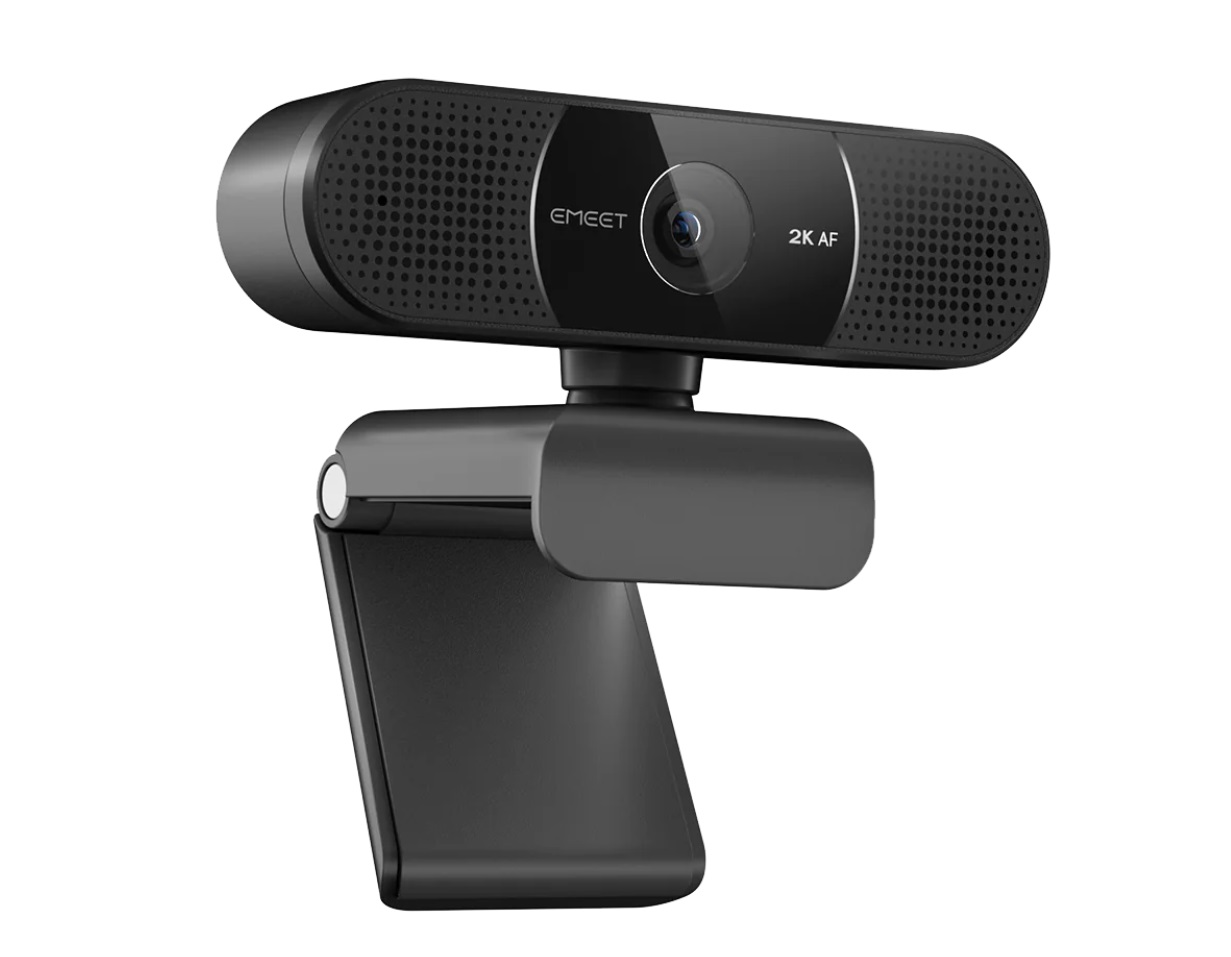
Pros
Very good value 1440p, 30Hz, autofocus Good noise-cancelling mics
Cons
Autofocus doesn’t work as well in dim lighting Somewhat precarious connection to a laptop Unnecessary utility software DIY privacy shutter Price When Reviewed:$49.99Best Prices Today:$37.98 at Amazon$44.99 at Walmart$49.99 at eMeet
Why I like the eMeet SmartCam C960 2K
My previous pick, the Monoprice 2K USB Webcam, always felt a little deficient: not bad, but not great either. I wasn’t especially happy with the quality. eMeet’s camera feels like a step up. It’s not perfect. However, the 1440p resolution is a better both on paper and in the real world. The other part of the equation that often gets passed over are how well the noise-cancelling mics work, and in this case I was pretty impressed.
This camera is also available from multiple retailers, which helps keep the price down — a must for a budget webcam. To be fair, you’ll notice the review compares the C960 2K to its predecessor, the more vanilla (1080p) C960. It’s about $10 cheaper. The C960 2K’s picture is marginally better, with improved autofocusing, but I think that the C960 2K’s mics are genuinely superior.
I don’t love some of this webcam’s features, including the stick-on privacy shutter…but it is a budget webcam, after all.
Who should buy the Monoprice 2K USB Webcam
This is for the person who says, “I want to upgrade my webcam, but I want to spend the least amount of money possible.” You’ll still get a decent upgrade; more than you would expect, actually. If a $10 discount matters, buy the cheaper 1080p version.
This webcam is also going to work better on a desktop monitor, by lieu of its rather simple mount. It feels flimsier when attached to a laptop.
Read our full eMeet SmartCam C960 2K review
BenQ IdeaCam S1 Pro – Best premium webcam
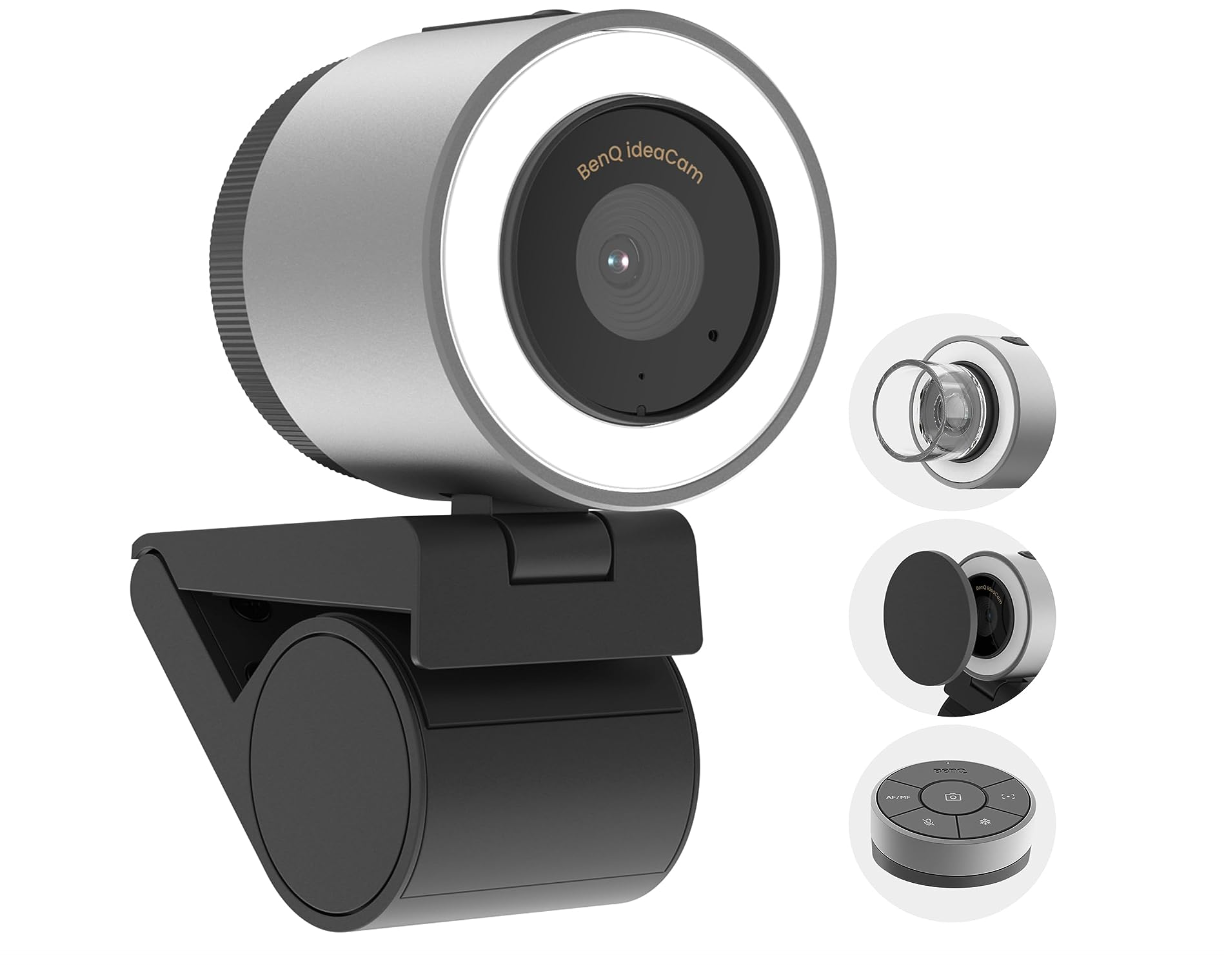
Pros
Great value Robust physical design Integrated ring light Macro lens genuinely seems useful Slick remote control included
Cons
Not quite 4K (but close enough) No 60fps option No AI pan or zoom, though manual zooming is allowed Legacy USB-A connector Separate privacy shutter Price When Reviewed:$199.99Best Prices Today:$199.99 at Adorama$199.99 at Amazon$199.99 at B&H
Why I like the BenQ IdeaCam S1 Pro
BenQ’s marvelous webcam offers a substantial amount of value, from its midrange price to the multiple, useful accessories that ship right inside the box. What I think I like most about this webcam, though, is that it excels as a webcam, then adds additional value through its peripherals, including both a macro (closeup) lens as well as a free remote control. This almost-but-not-quite 4K webcam even flips over for a top-down view.
The IdeaCam S1 Pro would probably be our favorite webcam if it wasn’t for the $100 or so price premium it commands, which isn’t for everyone. It’s robustly built, and ships with a free software utility that adds to its capabilities. (Zooming in and out is most easily accomplished via the remote control, which does take up more room on your desk.)
The webcam slides in and out of a robust mount quite easily. Pair that with the macro lens, and you can zoom in on detail work for presentations or hobbyists. The webcam has autofocus, though you’ll probably want to lock down the focus for the macro lens. It all works surprisingly well together, though.
Who should buy the BenQ IdeaCam S1 Pro
If you’re a streamer (a woodworker or baker, say) then the ability to flip the webcam into a top-down mode, then undock the IdeaCam S1 Pro and the bring it in close with the macro lens, feels like a tool no other webcam offers.
But yes, the IdeaCam S1 Pro also works as a generic everyday webcam, too. It also looks particularly nice under good lighting, so it’s better for a user who isn’t expecting the camera to do a lot of heavy lifting in that regard. And while it might not offer the absolute top-of-the-line options, it never really fails at anything, either. It’s just a good, solid value. Period.
Read our full BenQ IdeaCam S1 Pro review
OBSBOT Tiny 2 PTZ 4K – Best premium 4K webcam

Pros
Superb 4K video in multiple lighting conditions 60Hz option Excellent utility software and configurability Solid mic Voice commands are a nice touch
Cons
Doesn’t sit as securely as Tiny 1 “Beauty” options aren’t worth it Price When Reviewed:$329.00Best Prices Today:$329 at Amazon$329 at B&H
Why I like the OBSBOT Tiny 2 PTZ 4K
This 4K webcam does something unique: It follows you. Floating on a gimbal, this tiny(!) webcam can literally pan, zoom, and rotate essentially 360 degrees, using AI to lock on your face and follow it as you walk around a room.
While the Tiny 2 webcam boasts the same gimbal and tracking features as the first Tiny PTZ webcam, OBSBOT used a bigger 1/1.5-inch 50Mpixel sensor in the new model that lets in more light and provides a slightly clearer picture. So it accomplishes what you’d expect in a webcam: It wildly succeeds as just a webcam, with gorgeous 4K HDR images — but provides the increased tracking capabilities to add value. It almost tracks a little too well; avoid zooming in too close if you walk around so as not to give your viewers vertigo!
I also love the fantastic software package that accompanies the webcam, which on the Tiny 1 was the best I’ve ever seen. I’m less impressed by two new features: voice commands, which are useful but not necessary, and new “beauty” features that use AI to adjust your face. While the latter features work, I prefer a more natural appearance, flaws and all.
Who should buy the OBSBOT Tiny 2 PTZ 4K
If the budget webcams we selected above were ideal for students, this is the lecturer’s webcam. Share your slides with your student (or your clients, in a business setting) and let your video app project a snapshot of your face over them as you illustrate your point. If you walk and talk, this is the webcam for you.
Read our full OBSBOT Tiny 2 PTZ 4K Webcam review
Razer Kiyo Pro Ultra – Best premium 4K webcam runner-up
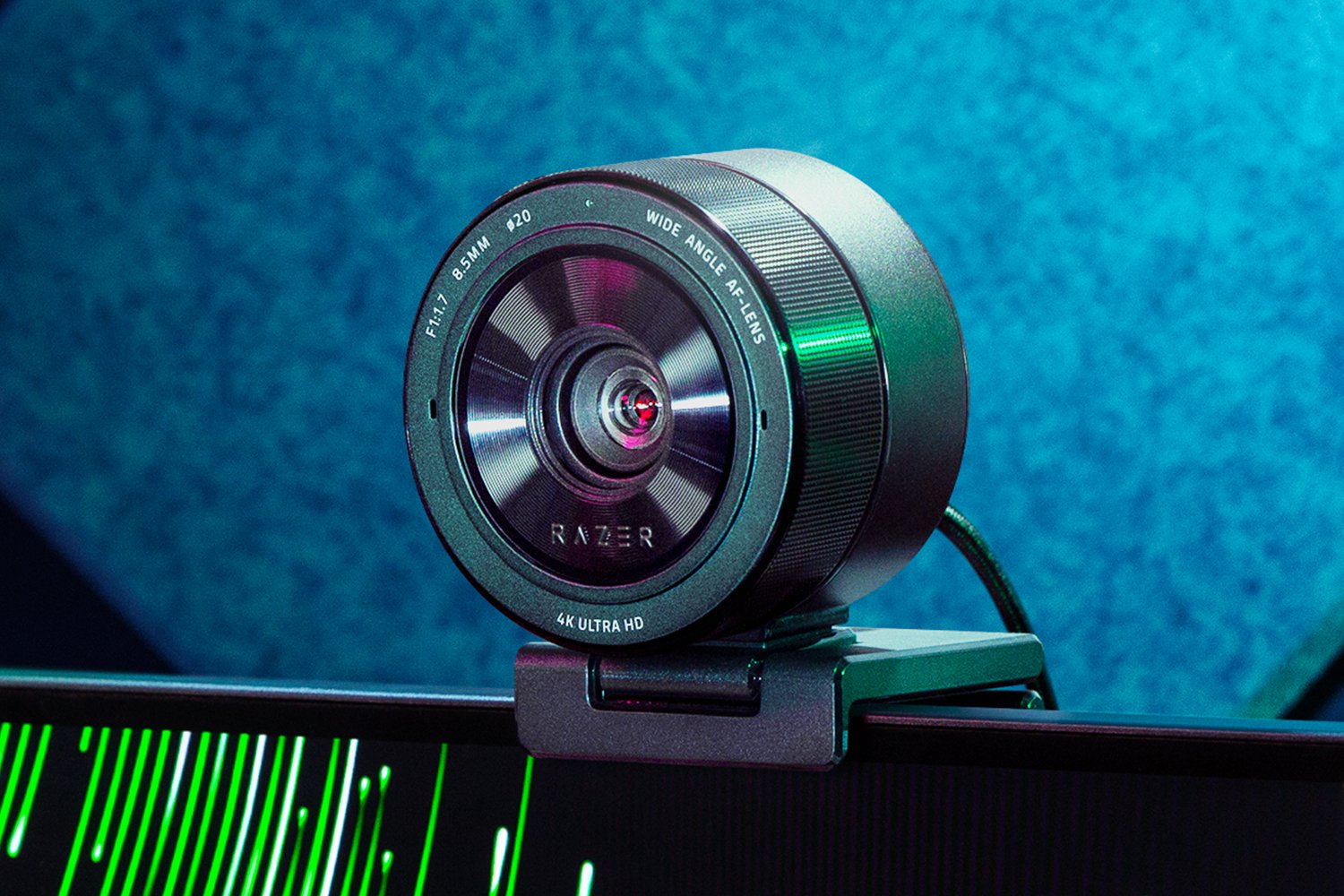
Pros
‘DSLR-quality’ imaging 4K options, HDR too Terrific configurability Lens cap as well as a privacy shield
Cons
Whew, that price! Average mic quality No Windows Hello Limited purchase options; just Razer.com for now Price When Reviewed:$299.99Best Prices Today:$299.99 at Razer
Why I like the Razer Kiyo Pro Ultra
The Razer Kiyo Pro Ultra claims to offer DSLR-quality images, and boy, it comes pretty close! This webcam captures video with a massive 2-inch lens at 4K at 30Hz or 1080p at 60Hz, using autofocusing technology that does a great job. The camera also can zoom in to offer a field of view between 72 degrees and 82 degrees, making sure that you, and you alone, are on cam.
All of this combines to produce an image that looks simply outstanding. It would be nice to see this camera produce 60Hz at 4K; instead, you have to choose one option or the other. But check out the sample screens in our review, and you’ll agree that it all looks as though a professional captured it. It even handles odd lighting situations very well. Colors just pop! We’ve highlighted some of the shortcomings above, but they’re overshadowed by everything else this webcam does.
Who should buy the Razer Kiyo Pro Ultra
If you want to look your very best on cam, buy this webcam. The lack of 4K60 captures may rule out high-end game streaming, but the ability for the camera to capture your face under most lighting conditions means a lot of other people will love it. Whether you’re pitching products on a Zoom or Teams call or you want to stand out among style-conscious peers, the Razer Kiyo Pro Ultra is the webcam for making a strong impression.
Read our full Razer Kiyo Pro Ultra review
NexiGo N980P – Best webcam for wide-angle
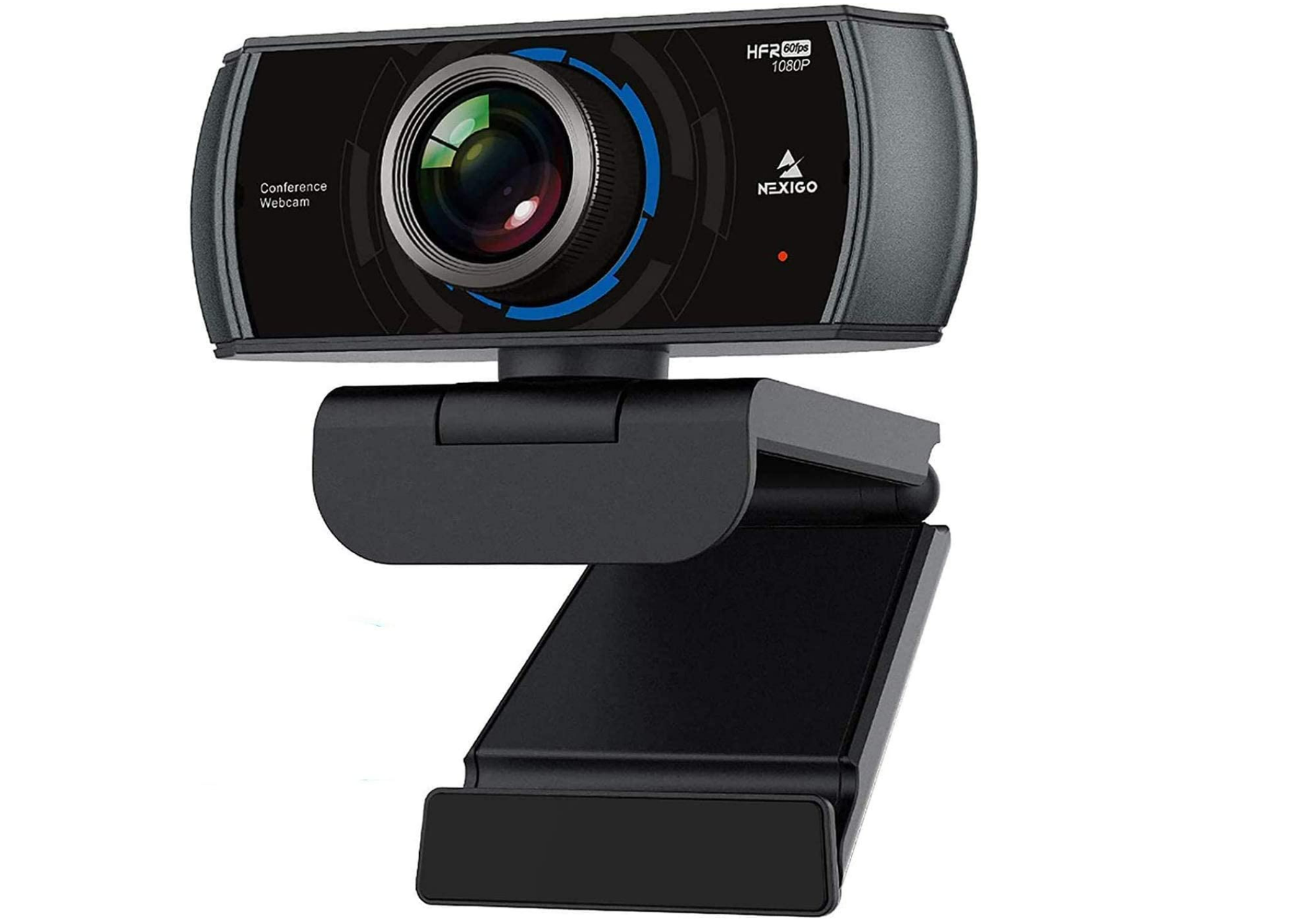
Pros
60fps 120-degree viewing angle Privacy shutter
Cons
Lack of fine adjustments Price When Reviewed:59.99Best Prices Today:$44.99 at Walmart$54.99 at Amazon
Why I like the NexiGo N980P
Not everyone needs a wide-angle webcam. But this does allow you to show off more of a scene than an ordinary webcam does, which makes it a valuable tool for specialized applications.
This fixed-focus 1080p webcam captures frames at a smooth 60 frames per second, as opposed to the more standard 30fps. You’ll look smoother and more lifelike as a result. The wide angle means that it will work well in a conference room. A privacy shutter is included.
Who should buy the NexiGo N980P
If you have more than one person on camera at any one time, consider something like the NexiGo N980P. During the pandemic, the local middle school’s drama department broadcast monologues and scenes via Zoom, which allowed students the opportunity to perform. But a narrow webcam wouldn’t have allowed these scenes to be broadcast as effectively.
This camera would work equally well with a small conference room or even a family gathering, such as a living room where one family talks to grandparents overseas. It’s still a fixed-focus camera though— if you want an autofocusing model I recommend you pay about $100 for the upgraded NexiGo N680p instead.
Logitech Brio 4K Ultra HD Webcam – Best premium webcam for Windows Hello

Pros
Sharply detailed resolution with vibrant colors Wide-angle field of view Infrared-based facial recognition
Cons
Expensive Price When Reviewed:$199.99Best Prices Today:$144.90 at Amazon$159.95 at B&H$192.99 at Best Buy
Why I like the Logitech Brio 4K Ultra HD Webcam
Why wouldn’t you buy a webcam that can protect your PC via biometrics, log you in with your face, and make you look great on a video call? The Logitech Brio 4K Ultra HD webcam is one of the small group of Windows Hello webcams that can perform both tasks.
The autofocusing Logitech Brio 4K supports various resolutions and frame rates, including 4K Ultra HD at 30fps, 1080p at 30- or 60fps, and 720p (HD) at 30- or 60fps. According to our review, Logitech’s RightLight 3 technology snaps photos and video in a range of lighting conditions. It can adjust the field of view from between 90 degrees to 78 degrees or 65 degrees. You will need to download the Logitech app for fine-grained control options, however.
Who should buy the Logitech Brio 4K Ultra HD Webcam
Anyone who doesn’t like entering a password or PIN but doesn’t want to skimp on webcast quality, either. Seriously, as biometric identification becomes more prevalent, with passkeys standing in for passwords, Windows Hello will become more important. Put that way, the Brio 4K is cheap at the price.
Read our full Logitech Brio 4K Ultra HD Webcam review
How to shop for a webcam
A standalone 1080p webcam can greatly improve how you look on your next Zoom call. Here’s what to look for: Prioritize a 1080p webcam, then a higher refresh rate, then jump up to 4K. If you can get more than one feature, great! Unless you’ll be moving about a lot, a fixed-focus webcam will do just fine.
It’s important to note that of the three major videoconferencing services (Microsoft Teams, Zoom, and Google Meet) only Teams will automatically scale up your video to 1080p if your network and your webcam support it. You can enable 1080p video in Zoom and (finally!) in Google Meet, but they require some manual adjustment in the app’s Settings menu. All three services will eventually auto-scale video calls for 1080p cameras — it’s just a matter of time.
Looking like you’re on television will subtly lend you authority. People gravitate toward celebrities, and a 4K, 60Hz webcam is basically what your TV offers. If you’re an executive or making sales calls over Zoom or Teams, a premium webcam may give you an edge. That’s why professional streamers use them, after all.
Adjustable or fixed focus
Don’t worry about fixed-focus, as virtually all webcams have been pre-configured at a focal length that’s about the distance between your face and your laptop or monitor. You’ll need to account for this with tripods, however, or pay a little more for an autofocusing webcam. Autofocus webcams are handy for situations where you may be moving about the room, but beware distracting webcams that frequently refocus.
Higher frame rates
A standard webcam captures video at 30 frames per second, and will look “normal.” You’ll notice the smoothness of a 60fps camera though, and so will people you’re on a video call with.
Field of view (FOV)
The camera’s field of view can vary. A 90-degree FOV helps people focus on you (and perhaps not the mess you’ve hidden off to the side). A 110-degree or higher FOV works better for group shots, although distortion can become a problem the wider your FOV gets. A 65-degree FOV may be perfect if it’s just you.
Think of a 90-degree FOV as one that would show two people seated side-by-side at what you would consider a “standard” distance from a webcam, or a foot or two. A 110-degree FOV can show three people, squeezed a bit close together. Keep in mind that many videoconferencing applications offer the option of virtual backgrounds, which eliminate visual clutter.
Privacy shutter
These devices are not a privacy threat, for the simple reason that they can be unplugged easily. Most have a flip-down privacy shutter, but you could always put tape over the camera or drape it with a dark cloth.
Ring lights
Yes, integrated ring lights are now a thing on premium webcams, and worth the money if lighting is a challenge for you. While the integrated light will certainly help with lighting, a big bright monitor display (use a full-screen version of Notepad for a white screen) in front of you can serve a similar function. You can also purchase a ring light separately.
Windows Hello
You may have used Windows Hello with a fingerprint reader or another laptop. The camera simply “recognizes” you, logging you in. It’s exceptionally convenient. We have a separate article on the best Windows Hello webcams.
Tripod bundle
With so many webcams on the market, manufacturers are trying hard to differentiate their products. The new trend is a small tripod, which gives you more options for mounting the camera. Not all webcams include this. Normally, however, you can simply clip the webcam to the top of a display or a laptop with its “jaws” clamp, so a tripod isn’t really necessary unless you move around a lot or want a different angle.
AI
There’s a potential wild card that may be attached to webcams in the future: artificial intelligence, specifically Windows Studio Effects. Right now, the current Surface Pro 9 (5G) uses the AI capabilities in the Qualcomm Snapdragon processor to apply background blue, automatic panning effects, and more. (Our review discusses this.) Other laptops that use Intel Core and AMD Ryzen processors don’t include AI capabilities — yet. Specific models in the 13th-gen mobile Core and AMD Ryzen 7000 Mobile series include some basic AI capabilities, and future processors in both families may offer AI capabilities and therefore Windows Studio Effects.
The OBSBOT webcams don’t need any of this, using an independent gimbal and tracking software to keep you in the frame.
How we test webcams
Our recommendations for webcams are weighted pretty heavily toward the image each webcam produces, as you might expect. But there are a number of additional criteria we look at when making a webcam recommendation. A separate article provides a detailed explanation of how we test webcams at PCWorld, but here’s a summarization of the process:
Our first criteria is price. We don’t want you spend more than you have to. But it’s fair to say that a more expensive webcam might be worth it if it offers more. So we factor in features: the resolution, the refresh rate, whether the camera pans or zooms, or offers something rather novel, such as the ability to show a different perspective.
From there, we remove the webcam, examine the packaging, and see how well it sits atop some of our monitors and laptops. Does it grip tightly, or tend to wobble? Is the cord long enough, and does it use USB-A or USB-C?
As the lead reviewer, I take sample images both in my downstairs office, which is normally lit by a combination of dim artificial light and indirect natural lighting. I use a second shot in brighter light, with a nice colorful background that mimics a real-world environment. I’m not really looking for the best-case scenario, as most webcams now take good shots in clear, natural lighting. But how do they do when lighting conditions aren’t ideal? I think that’s important.
I also load any utility software available and explore what options those provides. Does the webcam provide any additional functions, such as a top-down perspective? Ring lights? I try those out, too.
Finally, if the webcam provides any noise-cancelling mics (and most do) I play some background music on my phone and make a recording on my laptop using Windows Sound Recorder. A good noise-canceling mic will try and minimize these distractions.
FAQ
1.
Can you use a smartphone as a webcam?
Soon, yes! Microsoft is testing a smartphone webcam feature in Windows 11 that sounds like it should be out in a month or two. The feature would allow you to mount a smartphone (how you do it is up to you) and then use either its front or rear camera as a webcam in any and all video applications. You’ll need a phone running Android 9 or above, and the connecting software to enable it to talk to Windows.
Sorry, iPhone users: This is only for Android smartphones.
2.
Do you need Wi-Fi for a webcam?
Yes and no. These webcams all connect to your computer directly, via a USB port, and you can record video from them while offline. Your computer will then need to be connected to either ethernet or to Wi-Fi for you to be able to chat with a friend or business partner, however.
3.
Can a webcam work without a computer?
Some webcams can work without a computer, but not all of them. USB webcams, featured here, connect via USB to a computer and require it to operate. USB webcams are most often those used for video chat or live streaming from your computer on websites such as Twitch.
IP webcams however, can connect directly to a network, router, or modem and do not require a computer at all in order to work. IP webcams are most often used as security cameras or for live feeds that upload directly to the cloud. Those are separate products, however, and not the same webcams we’re talking about here.
4.
How do I connect my webcam to the internet?
For USB webcams, it will be as simple as plugging the camera into your computer’s USB port, and then connecting to the internet via your computer.
5.
What software do I need to connect my webcam?
Technically, most webcams are plug and play, so you should simply be able to connect them to your PC to get them to work. Many, however, require their own software utilities to be installed to take advantage of specific features and to facilitate automatic updates. To actually use your webcam in a conference call, however, you’ll need to use Zoom, Microsoft Teams, Google Meet, or another videoconferencing app. Make sure you enter the app’s settings menu and select the webcam’s camera and microphone to provide the audio and video for your call.
Author: Mark Hachman, Senior Editor, PCWorld

Mark has written for PCWorld for the last decade, with 30 years of experience covering technology. He has authored over 3,500 articles for PCWorld alone, covering PC microprocessors, peripherals, and Microsoft Windows, among other topics. Mark has written for publications including PC Magazine, Byte, eWEEK, Popular Science and Electronic Buyers’ News, where he shared a Jesse H. Neal Award for breaking news. He recently handed over a collection of several dozen Thunderbolt docks and USB-C hubs because his office simply has no more room.
Recent stories by Mark Hachman:
Best Thunderbolt docks 2024: Extend your laptop’s capabilitiesFTC warns three PC tech companies of potential warranty violationsThunderbolt 5 cables are here! But only one is worth buying right now






